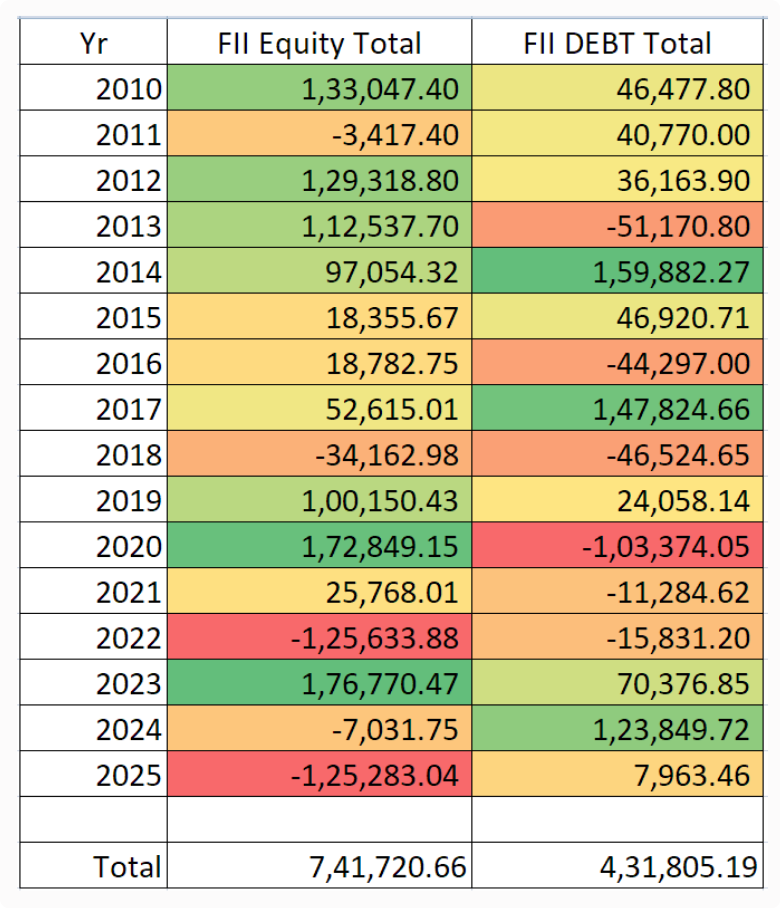Strong Entry in Early Years
Foreign Institutional Investors (FIIs) have been a major part of the Indian stock market for many years. If we look at the last 15 years, their journey has been full of ups and downs. From 2000 to 2014, FIIs made a strong entry and invested heavily in India.

Surprisingly, when the markets started moving up strongly between 2014 and 2017, their investment levels were lower compared to the earlier years.
Buying at Bottoms, Selling at Tops
The interesting thing about FIIs is the way they time their moves. In 2018, when the markets corrected, they pulled money out but later added big amounts in 2019 and especially after the Covid crash. This shows that they used market bottoms very smartly. In 2021, when the markets were at record highs, they hardly bought anything, adding only around ₹25,000 crore. In 2022, they sold massive amounts of around ₹1.25 lakh crore. Again, in 2023, when the market slowed down, they came back and bought around ₹1.76 lakh crore. But in 2024 and 2025, they have been heavy sellers once again. Clearly, FIIs as a group have done well in buying low and selling high.
Moves in Debt Market
It is not only equities where FIIs make changes. They also play an active role in the debt market. Whenever they reduce exposure in equities, they often increase investments in debt. For example, in the last two years, about ₹1.32 lakh crore moved out of equities, while close to ₹1.30 lakh crore went into debt. This shows that money has not left India, it has only shifted from one asset class to another.
The Idea of Asset Allocation
What FIIs are doing is a simple principle of asset allocation. Whenever they feel equities are not attractive, they move money into debt and when debt looks less attractive, they shift back into equities. This pattern has been seen many times, including in 2013, 2016, and 2020.
Lessons for Investors
The key takeaway here is that investors can also practice asset allocation in their own portfolios. It does not have to be limited to just equity and debt. One can also include other asset classes like gold or real estate. What matters is the right balance. By adjusting allocations over time, one can reduce risks and create stability for long-term wealth building.










